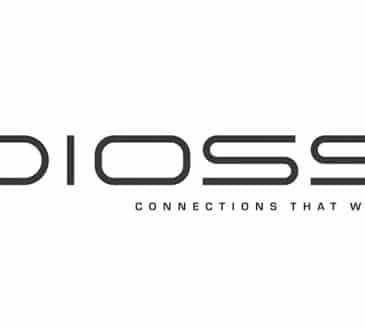CEO Spotlight: Digital Literacy -The Digital Divide’s Invisible Obstacle with Hanif Lalani

In early 2020 when the novel coronavirus SARS-CoV-2 began spreading rapidly across the globe, many of us were lucky. As shelter-in–place policies began to crop up around the world, organizations sprung into action and quickly moved services online in order to accommodate social distancing amongst the uncertainty.
Restaurants began to offer to-go services, and online grocery sales grew by 103 percent year-over-year in 2020. Zoom dates and meetings became the new normal, and teachers adapted their lesson plans to facilitate online classrooms. Telehealth offerings broadened significantly, in addition to a number of other social services that were able to begin offering virtual resources and support.
For many of us the internet served as a much-needed support system, cushioning us from feeling the full impact of the coronavirus pandemic on our daily lives. However, for the estimated 3.7 billion people globally who have little to no access to the internet, Covid-19 and the subsequent migration of many businesses and services online only further exacerbated what has become known as the digital divide.
Disproportionately impacting rural communities, women, low-income families and LDCs, the coronavirus pandemic highlighted the widening gap of the digital divide and numerous programs and initiatives – both governmental and privately-funded – have emerged in recent years aimed at increasing digital access for those who need it most. However, while increasing peoples’ ability to have affordable and reliable internet at their disposal is certainly an important aspect of closing the digital divide, it is not the only obstacle preventing people from utilizing the internet to its fullest potential.
In-tandem with increasing access to high-speed internet, there must also be a push for developing digital literacy. While millennials and younger generations who are considered “digital natives” may have trouble comprehending the concept of digital illiteracy, it is a prevalent problem that inhibits bridging the gap in the digital divide. Without digital literacy, individuals provided with internet access through infrastructure developments will not be able to leverage the full potential of such investments, lacking the knowledge of how to use it in a safe and effective way.
“Providing affordable data and consistent service is certainly a vital step that we are currently working toward,” says Hanif Lalani, a telecoms executive currently working on a number of high-speed internet initiatives for a private shareholder across the globe. “But we also know that in order to access the internet’s full capabilities for innovation and growth tools must be provided to educate people on how to use it in a meaningful and beneficial way.”
Working for over thirty years in the IT and telecoms sector, Lalani has guided much of the development of modern day connectivity in Britain. This work has prepared him to play a role in the large-scale financial projects that are working to bring connectivity to regions most lacking.
The scope of the digital divide has also evolved in the last three decades. In 2006, Jakob Nielsen, Ph.D. predicted that economic factors were just the first hurdle in bridging the gap, categorizing it instead into three stages: economic, usability, and empowerment.
The first stage as classified by Nielsen is the economic divide. This pertains to the economic factors that would prevent people from accessing the internet. In earlier days the most common concern was the affordability of computers, but as the cost has grown cheaper this has become a less prevalent issue. Additionally, the movement to mobile technologies for internet access has also negated much of this earlier concern.
Today, the main economic concerns are the cost of building out necessary infrastructure such as fiber cables, and the ability for individuals to be able to afford smartphones and data needed to access it. This is where much of the focus has been placed in recent years, with both governmental bodies and private enterprises such as those being worked on by Lalani operating to bring affordable connectivity.
“Where ownership of smartphones is an issue, where data is expensive, where access to medical advice is critical and cheaper access to education a must – this is where attention must be given,” says Lalani.
The second stage is the usability divide which encompasses digital literacy. According to the American Library Association’s definition, those who have digital literacy possess “the variety of skills – technical and cognitive – required to find, understand, evaluate, create, and communicate digital information in a wide variety of formats.”
This means they are able to utilize a number of different technologies appropriately and effectively to retrieve information, interpret results, and judge the quality of that information; understand the relationship between technology, life-long learning, personal privacy; and use these skills to actively participate in civic society and contribute to their communities.
“As a global society, we must take a holistic view of the digital divide,” says Lalani. “To ignore this aspect of the divide is to only provide a partial solution.”
Nielsen’s final stage is the empowerment divide, and from a digital literacy perspective this can be seen as all the ways in which a lack of it results in a loss of empowerment. Nielsen said that in researching search engines, he found that many users are unaware of how to use search effectively on the internet. They don’t understand advanced search features, often uncritically select the first search results, not understanding how search engines prioritize their listings. Many are unaware that the “sponsored links” often at the top of a search engine are in fact paid advertisements.
Without the skill set of digital literacy, the internet can result in a loss of power rather than gaining agency. Lacking the ability to take matters into their own hands, people utilizing the internet without digital literacy will be at the mercy of other people’s decisions. This especially rings true as everything from healthcare to elections are increasingly inhabiting the digital space, and cybersecurity threats also serve as a danger to those who are unaware of how to navigate the internet safely.
Rather than simply providing those without internet the tools and technology to access it, the understanding of the digital divide must be broadened to ensure that users of the internet are all equally aware of how to utilize it safely and efficiently. The multiple and intersecting barriers that are faced by people wishing to access, use and understand digital technology will require a commitment to building not only infrastructure, but systems and tools that can be used to improve digital literacy skills.
“We are living in the digital era, and it is the duty of those of us who have achieved consistent connectivity and digital literacy skills to aid those who still lack them in catching up, allowing them the same chance for growth and innovation that we have,” says Lalani.
Have you read?
CEO Spotlight: Nikolas Charalambous – President & CEO Hellenic Seaplanes SA.
THE CORPORATE LADDER IS COLLAPSING by Dr. Alan M. Patterson.
CEO Spotlight: Georgia Kartsanis – Founder & President CEO Clubs Greece.
Europe Is Getting Tough on Big Tech. When Will the US Do the Same by Jason Boyce.
What it Means to Entrust by Leo Bottary.
CEO Spotlight: How CEO Luiz F. Costa Macambira Brought Forbes Monaco to Luxurious Success.
Add CEOWORLD magazine to your Google News feed.
Follow CEOWORLD magazine headlines on: Google News, LinkedIn, Twitter, and Facebook.
Copyright 2024 The CEOWORLD magazine. All rights reserved. This material (and any extract from it) must not be copied, redistributed or placed on any website, without CEOWORLD magazine' prior written consent. For media queries, please contact: info@ceoworld.biz








